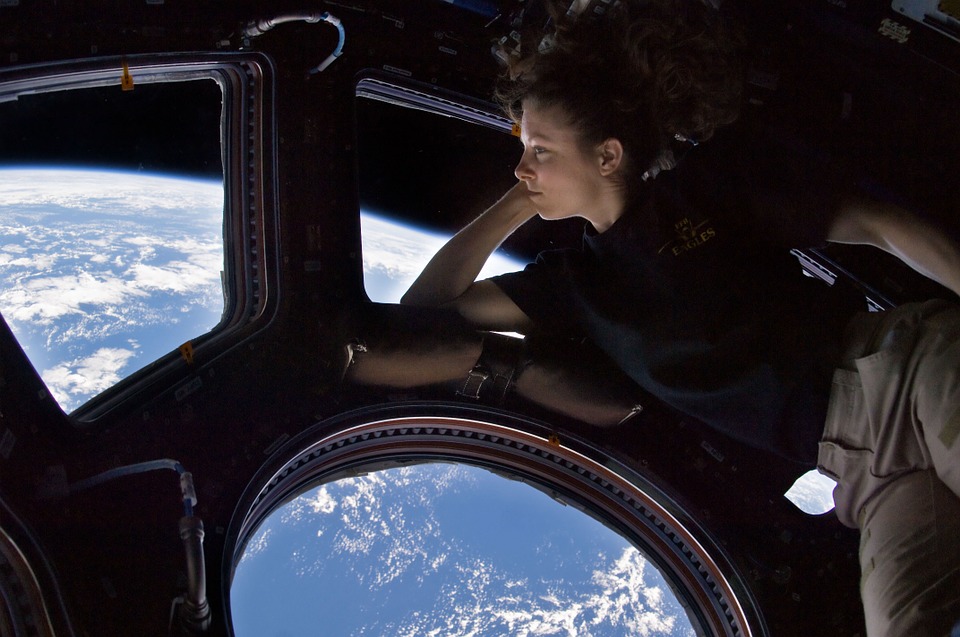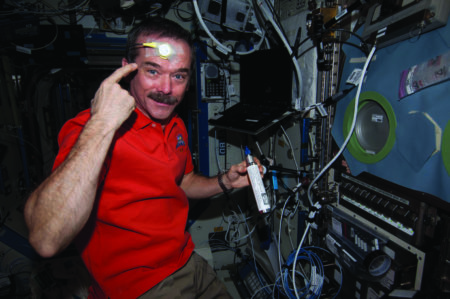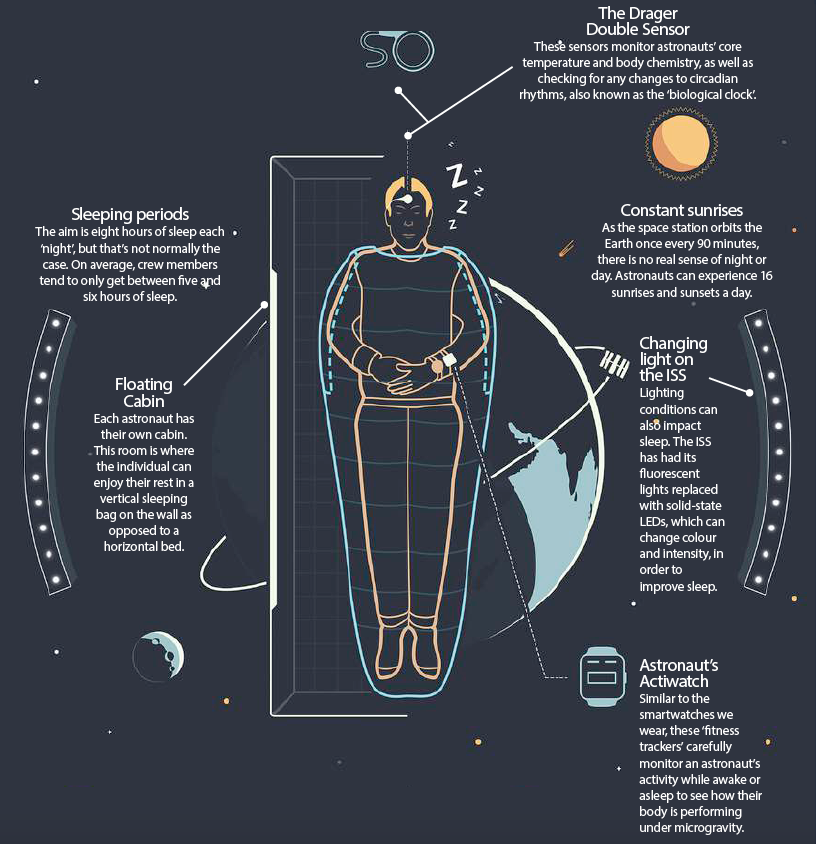Sleepless on the space station

Sleep is essential for our health, which is why NASA carefully studies each astronaut’s sleeping patterns
Many people feel that at the end of a hard day there is nothing better than collapsing onto a comfortable bed and catching some well-earned Zs when night falls. However, when you’re in space it’s a completely different world, and astronauts are stuck in an unusual state of perpetual weightlessness and ever-changing sunlight exposure. For astronauts aboard the International Space Station, there’s no collapsing onto a bed, no falling asleep when the Sun sets, no waking up when the Sun rises, and there are constant troubles with motion sickness. This can cause problems when trying to maintain a good sleeping pattern, which refreshes and maintains the astronauts’ wellbeing. This is important, as in space astronauts need to remain at maximum efficiency, and this can slip with a bad night’s sleep. This is why NASA continues to study astronauts’ sleeping schedules as they plan for future space expeditions. There are many aspects that affect one’s sleep, including the timing schedule, the environment, lighting and cognitive behaviour. By studying how these different details sculpt an astronaut’s rest NASA can begin to plan for long-duration space travel. The journey to Mars, for example, would take roughly nine months, and sleep plays a vital part in ensuring the astronauts stay in a good state of mind and health along the way.

Chris Hadfield points out his Drager Double Sensor, which monitors his biological clock during sleep Credit: NASA
Monitoring a space slumber
Different factors contribute to a good night’s sleep in space, and NASA is carefully monitoring each of these points

This article was originally published in How It Works issue 115, written by Lee Cavendish
For more science and technology articles, pick up the latest copy of How It Works from all good retailers or from our website now. If you have a tablet or smartphone, you can also download the digital version onto your iOS or Android device. To make sure you never miss an issue of How It Works magazine, subscribe today!




